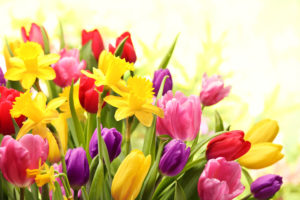Gardening in the U.S. has risen in popularity in recent years, with over one-third of American households now growing food at home or in a community garden.
If you’re one of these green thumbs, it’s more important than ever to know in which hardiness zone you live so. That way you can raise plants that thrive in your climate. For Milwaukee residents, that means zone 5, which means you can grow plants that can survive winter temperatures of -20 degrees Fahrenheit and higher.
This quick guide explains the definitions of zones and plant hardiness, and give suggestions for zone 5 plants that do well in the Milwaukee area.
Hardiness of Plants
When a plant is considered hardy, it means it can withstand living in colder temperatures.
This is important for gardeners to know when deciding upon the best flowers, plants, and grass to choose for their landscape design. And to do that, you need to know in which hardiness zone you live.
How to Use the Hardiness Zone Map
To know which plants are suitable for your geographical area, you will need to look up your hardiness zone. A hardiness zone is a section of the U.S. that is defined by its average annual winter temperature.
The United States Department of Agriculture (USDA) Plant Hardiness Zone Map allows you to find which zone you live in. Each zone is also technically divided into two sections (a and b). While Milwaukee is located in zone 5, most of the city lies in zone 5b.
The USDA’s map divides the nation into thirteen main zones and has been updated through the years as new weather data indicated climate change. The most recent version of the map takes into consideration changes in elevation and closeness to bodies of water when determining where each zone begins and ends.
Prior to the map, farmers had to rely on their own common knowledge and publications (such as the Farmer’s Almanac) to know what crops were most suitable for their climates.
By the 1970s, however, the USDA Plant Hardiness Zone Map emerged as the favorite and most accurate map. That’s why it is used to this day as the planting standard for gardeners and landscapers.
Zone 5 Plants
As a Milwaukee-area resident, you probably know that our weather is defined by its cold, snowy winters and warm, humid summers. What you may not know, however, is that our zone experiences a growing season that usually begins around May 15 (the last average frost date) and ends by mid-October.
Zone 5 is not the coldest zone in the U.S., but it does mean you need to choose plants carefully. Fortunately, there is no shortage of colorful perennials and bulbs that thrive in zone 5 that are perfect for Milwaukee-area gardens and lawns.
Here is just a partial list of flowers that do well in zone 5:
- Tulips
- Daffodils
- Lilies
- Delphinium
- Garden phlox
- Lavender
- Hollyhocks
- Hyacinths
- Poppies
- Bee balm
- Purple coneflower
- Violets
In addition, these plants for great for ornamental touches:
- Ferns
- Hosta
- Zebra grass
- Ligularia
- Jacob’s ladder
- Coral bells
Several varieties of grass also do well in zone 5. These include bluegrass, fescue, buffalo grass (which is native to this area), and ryegrass.
Get Planting
There’s still time this season to polish your home’s landscaping. The plants listed above are suitable for zone 5, which is a great place to start.
And, if you’d like help with your garden design or ongoing maintenance, don’t hesitate to contact us today. We offer professional landscaping design and grounds maintenance solutions throughout Milwaukee and Waukesha.




